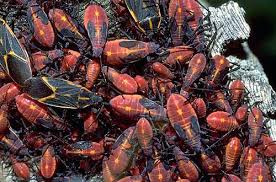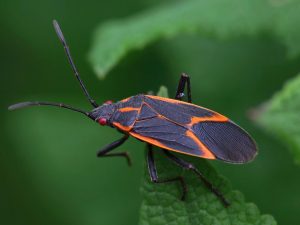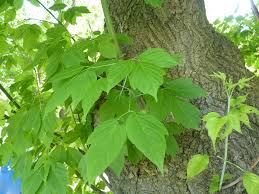What are Boxelder Bugs?
Boxelder bugs get their name from the tree on which they love to reside, the boxelder tree. These bugs can be a real nuisance to homeowners since they often invade homes in the winter, traveling in swarms and leaving dark stains – their excrements – on curtains and wall surfaces.

Aggregation of Boxelder bugs
Frequented Areas of Boxelder Bugs
These bugs live and breed primarily on the bark and leaves of boxelder trees. They especially love areas that provide prime access to sunlight, including sections of branches positioned towards the sun. They may also create habitats on other trees that include ash or maple trees but trees are not the only place they frequent.
During the colder seasons, boxelder bugs move to places more suitable for overwintering. That includes the warm depths of your home. They are attracted to the sections of your home’s exterior that face the sun.
Identification – Physical Characteristics
Boxelder bugs are a type of true bug known within the scientific community as the Boisea trivittata. These bugs are usually black in color with red lines stretched across their upper backs and wing covers. The body of an adult boxelder bug measures about 14mm in length.
Like other true bugs, they also have sharp mouthparts extending from their bodies which they use to feed or defend themselves. Their mouthparts do not release venom but they can use it to suck juices from plants or even bite predators.
The nymphs of boxelder bugs, i.e. immature boxelder bugs, are usually red in color with an appearance similar to

A boxelder bug up close and personal
that of the adult bugs. However, nymphs are much smaller in size.
Special Characteristics of Boxelder Bugs
One of the main things homeowners worry about when they see a swarm of boxelder bugs is whether or not they bite. Thankfully, they do not usually bite humans. They’ll only attack if you do something that makes you seem like a threat. To reduce the risk of being bitten, be sure to prevent a boxelder bug from coming into contact with your bare skin.
Removal and Preventative Procedures
Control and prevention of boxelder bugs involve procedures homeowners can use in the case of any true bug. It involves the sealing of cracks and entrance ways, using screens and chemical treatments. See the comprehensive list below for tips on how to prevent or control boxelder bug invasion.
- Fill gaps around doors, windows or fascia boards to prevent boxelder bugs from entering your home
- Caulk cracks and seal gaps around utility wires
- Repair broken windows or damaged doors
- Install window and door screens
- Where necessary, install screens in vents as well
-

A boxelder tree
Sweep up bugs or use vacuum to remove them
- Remove woodpiles or leaf coverings in your yard that may shelter bugs
- Use powerful water source to wash away bugs congregating on your home’s exterior
- Use pesticides as recommended by a pest control expert
In Store or Chemicals
If you are purchasing a pesticide to control boxelder bugs, ensure you use one that is recommended by pest control professionals. Check the level of toxicity and be sure to read the label before applying the product in your home once you purchase it online or from a gardening store.

No Comments